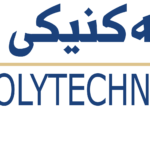- Chnar Mustafa Mohammed
- [email protected]
- 0750 172 1498
- Chnar_Thesis_Last V_December_11
-
Emerging fifth-generation mobile communication (5G) networks require high reliability, low latency, enhanced network capacity, and robust security. Managing Radio Access Network (RAN) infrastructure resources is challenging. Mobile service providers use Network Slicing (NS) to merge multiple services into an integrated 5G infrastructure. NS incorporates Wireless Network Virtualization (WNV) to smoothly separate services and efficiently allocate resources, ensuring optimal infrastructure utilization and network separation. However, WNV enables virtual management of NS, but the 5G network struggles to support end-user devices, causing delays in network slice selection and meeting modern telecommunications needs.
This thesis proposes a new NS architecture using virtualization to dynamically manage service selection and revenue between users and virtual operators in the 5G architecture. The virtual 5G RAN architecture includes Infrastructure Providers (InPs) and Mobile Virtual Network Operators (MVNO), serving hundreds of User Equipment (UEs). The architecture comprises sub-systems, including a wireless air-interface system, an economic system, and optimization algorithms. A new mathematical model is derived to introduce dynamic Inter-User Interference (IUI) and calculate a realized UE channel gain. In addition, integrating an economic model allows comprehensive cost and benefit analysis. The complexity of dynamic resource allocation necessitates a dual-pairing approach, pairing UEs with MVNOs and distributing InP resources to UEs through pre-selected MVNOs. For this instance, Matching Game (MG) and Particle Swarm Optimization (PSO) algorithms are introduced to optimize UE resource allocation while maximizing revenue for InPs and enhancing user throughput.
Simulation outcomes demonstrate the robustness of both algorithms in cost optimization and improved user throughput. The MG algorithm generates revenue by accurately matching user demands, while the PSO algorithm
V
prioritizes equitable resource distribution and offers lower prices. Both algorithms show a similar increase in convergence time as the number of UEs rises, stabilizing around 100 iterations for 300 UEs. PSO demonstrates faster convergence in 30 seconds compared to the MG's 45 seconds. In MG, the establishment of users reaches 98%, indicating a high user admission rate, and with PSO, the user engagement comes to %92. The study emphasizes the importance of considering WNV in 5G networks for resource and revenue optimization in the virtual RAN. - Erbil Technical Engineering College
- Information Systems Engineering Department
- 5G Network Slicing Communications Engineering
- Deedar Arif Hussein
- [email protected]
- 0750 416 9607
- DEEDAR ARIF HUSSEIN
-
In this research, the ultimate load capacity of post-installed anchors for three adhesives (three brands: HIT-RE10, ROX-GU80 and DUBELLF1331) and grouts (FLO-GROUT2) were evaluated experimentally and compared with the reference cast-in-place anchors. A parametric study was conducted to assess the effects of the anchor diameter (10, 12, 16 mm), anchor embedded length (5db,10db, and 15db), the cleaning method and drilled hole size on the adhesive and grouted anchors. Also, the effect of the saturation of the concrete on the pullout capacity for adhesive and grouted anchors had been studied.
Among the used three adhesive brands, the anchor adhesive Brand “HIT-RE10” appeared to have the largest bond capacity. Furthermore, apart from the small embedded length (5db), the experimental results showed that the ultimate load capacity of the post installed anchors was higher than the reference cast-in-place anchors. In the same embedded length range (>5db), the average bond stress decreased with the increase in the embedded length. With respect to the effect of increasing the embedment length and the diameter parameters, the results showed that there is a corresponding increase in the ultimate load capacity of both the adhesive and the grout anchors.
For the cleaning method parameter in the adhesive anchors, cleaning with Method I (air only) achieved a higher ultimate load capacity compared with cleaning using Method II (air plus wire brush) because wire brush tends to polish the drilled surface; however, in grouted anchors, cleaning using Method I (air plus wire brush) produced the larger capacity than cleaning using Method (II) because wire brush tend to remove dusts that remain in the drilled holes that produce a weaker bond between the grout and the concrete
The results showed also that cleaning holes of the adhesive anchors by Method III (washing with water and wire brush) produced the highest ultimate load capacity compared with the other two cleaning method.
Regarding the adhesive/grout thickness parameter, the ultimate load capacity, a part from the 5db embedment length, increasing adhesive thickness with (+4mm, +8mm and +12mm) resulted in a higher final bonding strength. This behavior was opposite in the grouted anchors, where there was a reduction in the ultimate load capacity with the increase of the grout thickness; this behavior was more pronounced at smaller depth (5db,10db) rather than large depth (15db).
Further, the adhesive anchors installed into wet saturated concrete have larger ultimate load capacity compared with the anchors installed into wet saturated concrete. Both of grouted and adhesive anchors ultimate load capacity increased when the anchors installed in saturated concrete but there was a drop in the ultimate load capacity of grouted anchor if it was installed into wet saturated concrete because it will increase the water / grout ratio. Also grouted anchors installed into dry concrete had lower ultimate load capacity compared to the grouted anchor that installed into saturated concrete.
- Erbil Technical Engineering College
- Civil engineering
- Structural engineering
- Narmin Jibrael Mansoor
- [email protected]
- 0750 456 6125
- Erbil Technical Administrative College
- Business administration
- Business administration
- GARDOON KHORSHID AZZAT
- [email protected]
- 0750 455 3166
- Masters thesis
-
Abstract
Goal: The aim of the current study is to elucidate the historical evolution of information and
communication technology and establish the relationship between (information and
communication technology and enhancing the training efficiency of instructors) at Erbil
Polytechnic University.
General Framework: The general framework of the study addresses the research problem,
which has raised several questions about the nature of the relationship, impact, and variation
between the independent variable (information and communication technology) and the
dependent variable represented by (training efficiency). To achieve this, a hypothetical study
plan was designed, consisting of a set of main hypotheses. To validate these hypotheses, they
underwent multiple tests, using a survey questionnaire as a means of data collection.
Study Methodology: The study adopted a descriptive-analytical approach, where the main
and subsidiary variables were described. This methodology was also used to analyze the
relationships and effects among variables. Study Population: The current study includes all
instructors in the colleges and institutes affiliated with Erbil Polytechnic University. The
hypotheses were tested using statistical methods through the software (SPSS V.22).
Conclusions and Recommendations: The study arrived at several main conclusions,
including the presence of a positive linear relationship between information systems and
training efficiency at both the overall and partial levels. The results of pre-distribution
questionnaire tests indicated that they met the criteria of face validity, comprehensiveness,
and stability. This, along with the arbitration process, suggests the possibility of relying on the
data results obtained through the questionnaire. The study proposes leveraging the strong
relationship between the variables to benefit Erbil Polytechnic University and recommends
supporting and enhancing weaker relationships.
Keywords: Information and Communication Technology, Training Efficiency, Erbil
Polytechnic Universit. - Shaqlawa Technical College
- Management Information Systems
- Management


